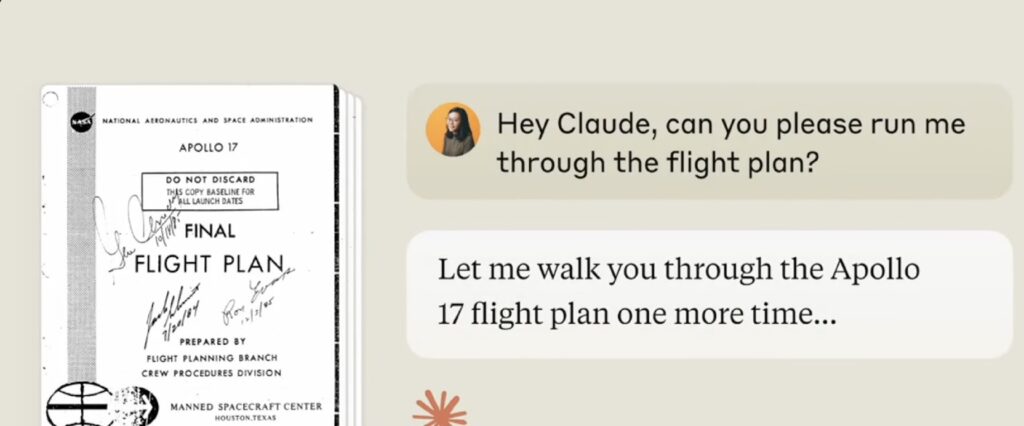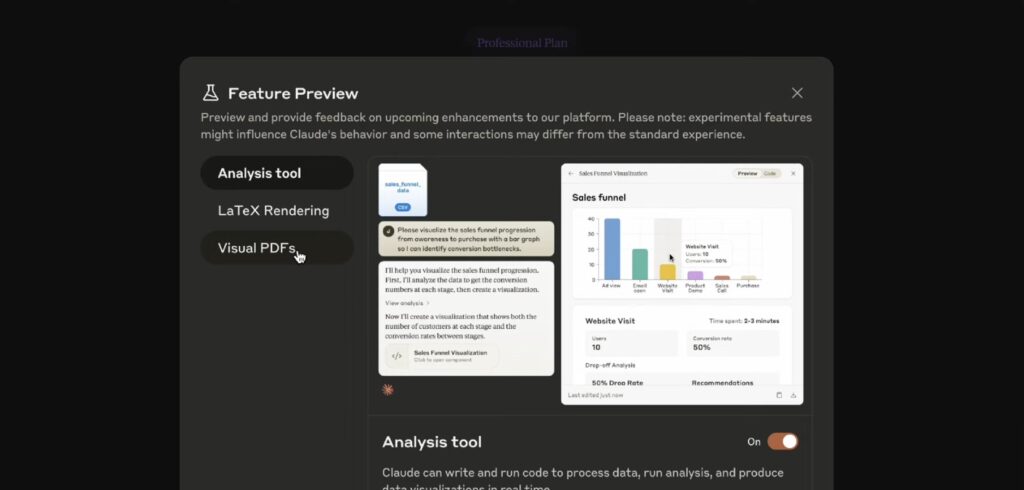Claude 3.5 Sonnet Takes AI to the Next Level with Visual PDF Analysis
- Visual PDF Analysis: Claude 3.5 Sonnet’s new feature preview now processes images, charts, and graphs in PDFs under 100 pages, ideal for technical and research documents.
- Enhanced Feature Set: From running JavaScript code to LaTeX support, Claude 3.5 Sonnet offers unmatched capabilities, positioning it ahead of competitors.
- Wider Integrations: Anthropic partners with GitHub, integrating Claude’s features into GitHub Copilot, pushing the boundaries of AI-powered code analysis and visualization.
Anthropic has unveiled another major update to its AI language model, Claude 3.5 Sonnet, introducing a Visual PDF feature that can analyze images, charts, and graphs within PDFs of up to 100 pages. This experimental addition to Claude’s feature set allows users to upload and analyze visual content in complex documents such as research papers, technical guides, and white papers. Just days after releasing Computer Use and an integration with GitHub Copilot, Anthropic is expanding Claude’s functionalities, reinforcing its position as a powerhouse in the AI ecosystem.

Visual PDF Analysis: Breaking Down Complex Documents with Ease
Claude’s Visual PDF feature allows users to upload a PDF, receive full context, and interact with its contents, including complex visuals. This is particularly valuable for fields requiring in-depth document analysis, as PDFs containing graphs, tables, and images can now be easily interpreted. Instead of just reading text, Claude can extract insights from visual elements, making it a game-changer for researchers and professionals analyzing intricate documents under 100 pages. Users can access Visual PDF through the Feature Preview section, where activating the tool makes it available for future conversations.

Expanding Claude’s Feature Set: From Code Execution to LaTeX Support
The Visual PDF capability is just one of several recent additions to Claude’s toolkit. The AI also includes an Analysis Tool that executes JavaScript code, allowing it to create data visualizations on the fly. This tool lets users input JavaScript, which Claude can execute to provide real-time graphs and visualizations based on the data. Coupled with LaTeX rendering for mathematical equations, Claude’s feature set provides a robust environment for complex data manipulation and presentation, putting it ahead in terms of versatility and technical depth.
Claude on GitHub: A New Era in AI-Powered Code Collaboration
Anthropic’s recent GitHub partnership integrates Claude 3.5 Sonnet into GitHub Copilot, enhancing collaborative coding and data analysis experiences. This partnership enables GitHub users to leverage Claude’s capabilities directly in their workflows, offering support for code-related questions, debugging, and technical document interpretation. By adding Claude into one of the world’s leading developer platforms, Anthropic is bringing AI-powered efficiency to coding tasks, creating new synergies between code and conversational AI.
Claude’s Competitive Edge Over Other Models
In the current landscape of AI, Claude 3.5 Sonnet has quickly gained a reputation as the most advanced model for code-based tasks. Its unique features, such as running code, visual PDF analysis, and math rendering, put it at the forefront of AI technology. In contrast, OpenAI’s recent GPT-o1 release, though innovative, has yet to reach the functionality of Claude’s model, particularly in data handling and technical document analysis. With Claude’s rapidly expanding feature set, Anthropic is positioning itself as a leader in functional AI for professional and technical applications.

Anthropic’s steady stream of updates demonstrates its commitment to building a comprehensive tool that serves researchers, developers, and analysts alike. Visual PDF and other features reflect Anthropic’s goal to make AI a powerful asset for interpreting complex documents, executing code, and handling detailed technical data. As Claude continues to evolve, Anthropic is set to redefine the ways in which AI models interact with documents, data, and code, bridging the gap between conversational AI and high-level technical analysis.
With this wave of new features, Claude 3.5 Sonnet is setting a new standard for AI capabilities. From document interpretation to data visualization and complex equation rendering, Anthropic’s AI advancements are equipping users with unprecedented tools to tackle the demands of modern data and document analysis.
